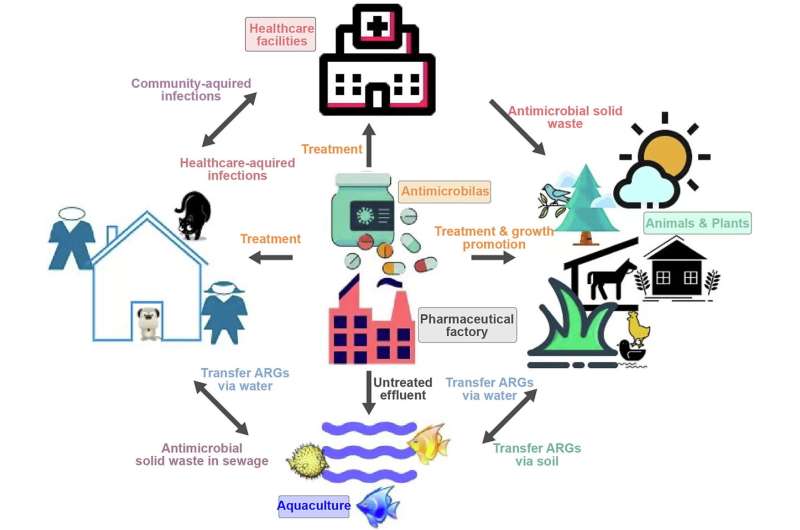The pathways of antimicrobials in the ecosystem. Credit: Biosafety and Health (2023). DOI: 10.1016/j.bsheal.2023.10.005
Antimicrobial resistance (AMR) is a growing global threat, especially in low- and middle-income countries (LMICs), causing prolonged illnesses, heightened antimicrobial use, increased health care expenses, and avoidable deaths. If not tackled, AMR could force 24 million people into severe poverty by 2030 and hinder progress on Sustainable Development Goals (SDGs).
A call to action by Rehab A. Rayan from the Department of Epidemiology at Alexandria University in Egypt has been published in the journal Biosafety and Health.
AMR spreads through interconnected ecosystems, with humans, animals, and the environment serving as reservoirs. Pharmaceutical wastewater, loaded with antibiotics and resistance genes, poses a significant environmental risk, mainly due to inadequate treatment and irresponsible disposal.
The pharmaceutical industry is a notable contributor to environmental antibiotic pollution, with varying effluent management practices. Contaminated pharmaceutical wastewater discharge harms water sources and ecosystems. Urgent collaborative efforts are needed across policymakers, regulators, manufacturers, researchers, civil society, and communities, adopting a One Health approach to curb AMR's spread.
Developing global standards for pharmaceutical effluent antibiotic residues, effective treatment methods, and improved diagnostics are vital in addressing AMR's environmental impact while safeguarding public health and the environment. National action plans should encompass comprehensive strategies to combat AMR. Preserving antibiotic efficacy and ensuring sustainable production require a united front from all stakeholders.
More information: Rehab A. Rayan, Pharmaceutical effluent evokes superbugs in the environment: A call to action, Biosafety and Health (2023). DOI: 10.1016/j.bsheal.2023.10.005
Provided by Compuscript Ltd
























